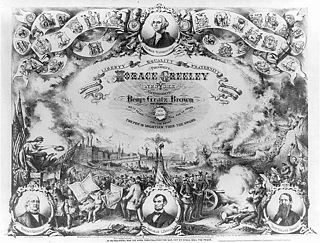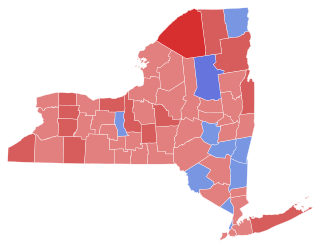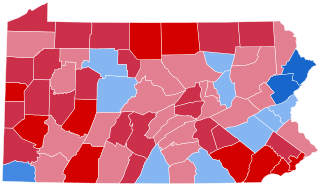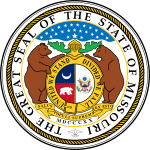
Presidential elections were held in the United States on November 5, 1872. Incumbent President Ulysses S. Grant, the Republican nominee, defeated Democratic-endorsed Liberal Republican nominee Horace Greeley.

The Liberal Republican Party was an American political party that was organized in May 1872 to oppose the reelection of President Ulysses S. Grant and his Radical Republican supporters in the presidential election of 1872. The party emerged in Missouri under the leadership of Senator Carl Schurz and soon attracted other opponents of Grant; Liberal Republicans decried the scandals of the Grant administration and sought civil service reform. The party opposed Grant's Reconstruction policies, particularly the Enforcement Acts. It lost in a landslide, and disappeared from the national stage after the 1872 election.

The 1872–73 United States House of Representatives elections were held on various dates in various states between June 4, 1872, and April 7, 1873. Each state set its own date for its elections to the House of Representatives before the first session of the 43rd United States Congress convened on December 1, 1873. They coincided with the re-election of United States President Ulysses S. Grant. The congressional reapportionment based on the 1870 United States census increased the number of House seats to 292.
More than 1,500 African American officeholders served during the Reconstruction era (1865–1877) and in the years after Reconstruction before white supremacy, disenfranchisement, and the Democratic Party fully reasserted control in Southern states. Historian Canter Brown Jr. noted that in some states, such as Florida, the highest number of African Americans were elected or appointed to offices after the end of Reconstruction in 1877. The following is a partial list of African American officeholders from the end of the Civil War until before 1900. Dates listed are the year that a term states or the range of years served if multiple terms.
The 1871–72 FA Cup is the modern era name of the 1871–72 Football Association Challenge Cup, the first staging of the Football Association Challenge Cup, the oldest association football competition in the world. Fifteen of the association's fifty member clubs entered this tournament, although three withdrew without contesting. Wanderers successfully pursued on 16 March 1872, at Kennington Oval, London the first FA Cup defeating the Royal Engineers by a single goal, made by Morton Betts, who was playing under the pseudonym A. H. Chequer.

Lamiinae, commonly called flat-faced longhorns, are a subfamily of the longhorn beetle family (Cerambycidae). The subfamily includes over 750 genera, rivaled in diversity within the family only by the subfamily Cerambycinae.

The 1872 New York state election was held on November 5, 1872, to elect the governor, the lieutenant governor, a Canal Commissioner, an Inspector of State Prisons and a U.S. Representative-at-large, as well as all members of the New York State Assembly.

The 1872 Democratic National Convention was a presidential nominating convention held at Ford's Grand Opera House on East Fayette Street, between North Howard and North Eutaw Streets, in Baltimore, Maryland on July 9 and 10, 1872. It resulted in the nomination of newspaper publisher Horace Greeley of New York and Governor Benjamin Gratz Brown of Missouri for president and vice president, a ticket previously nominated by the rump Liberal Republican faction convention meeting, also held in Baltimore's newly built premier Opera House of nationally well-known theatre owner/operator John T. Ford of the major Republican Party, which had already re-nominated incumbent President Ulysses S. Grant of the regular Republicans for another term.

The 1872 United States presidential election in California was held on November 5, 1872, as part of the 1872 United States presidential election. State voters chose six representatives, or electors, to the Electoral College, who voted for president and vice president. As was standard at the time, voters chose electors directly rather than simply voting for their party's candidate.
Members of the New South Wales Legislative Assembly who served in the seventh parliament of New South Wales held their seats from 1872 to 1874. The 182 election was held between 13 February and 28 March 1872 with parliament first meeting on 30 April 1872. There were 72 members elected for 52 single member electorates, 6 two member electorates and 2 four member electorates. The maximum term of this parliament was 3 years. However the assembly was dissolved after 32 months. Henry Parkes was the premier for the duration of the parliament. The Speaker was William Arnold.

The 1872–73 United States Senate elections were held on various dates in various states, coinciding with President Ulysses S. Grant's re-election. As these U.S. Senate elections were prior to the ratification of the Seventeenth Amendment in 1913, senators were chosen by state legislatures. Senators were elected over a wide range of time throughout 1872 and 1873, and a seat may have been filled months late or remained vacant due to legislative deadlock. In these elections, terms were up for the senators in Class 3.

The 1872 United States presidential election in Pennsylvania took place on November 5, 1872, as part of the 1872 United States presidential election. Voters chose 29 representatives, or electors to the Electoral College, who voted for president and vice president.

The 1872 United States elections were held on November 5, electing the members of the 43rd United States Congress. The election took place during the Third Party System. The election took place during the Reconstruction Era, and many Southerners were barred from voting. Despite a split in the party, the Republicans retained control of the presidency and both houses of Congress.

The 1872 United States presidential election in Massachusetts took place on November 5, 1872. All contemporary 37 states were part of the 1872 United States presidential election. The state voters chose 13 electors to the Electoral College, which selected the president and vice president.

The Massachusetts House of Representatives 2nd Hampshire district or "2nd Hampshire" is an electoral district for the Massachusetts House of Representatives. It consists of the towns of South Hadley, Easthampton, Hadley and precinct 2 of Granby. Democrat Dan Carey of Easthampton has represented the district since 2019.

Heterocyathus is a genus of coral of the family Caryophylliidae.
The 1872 New South Wales colonial election was for 72 members representing 60 electoral districts. The election was conducted on the basis of a simple majority or first-past-the-post voting system. In this election there were 8 multi-member districts returning 20 members and 52 single member districts. In the multi-member districts each elector could vote for as many candidates as there were vacancies. 12 districts were uncontested.

The 1872 Massachusetts gubernatorial election was held on November 5, 1872. Republican governor William B. Washburn was re-elected to a second term in office over businessman Francis W. Bird, a Liberal Republican nominated with support of the Democratic Party.

The 1872 Florida gubernatorial election was held on November 5, 1872. Republican nominee Ossian B. Hart defeated the Liberal Republican Party nominee William D. Bloxham.


















